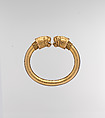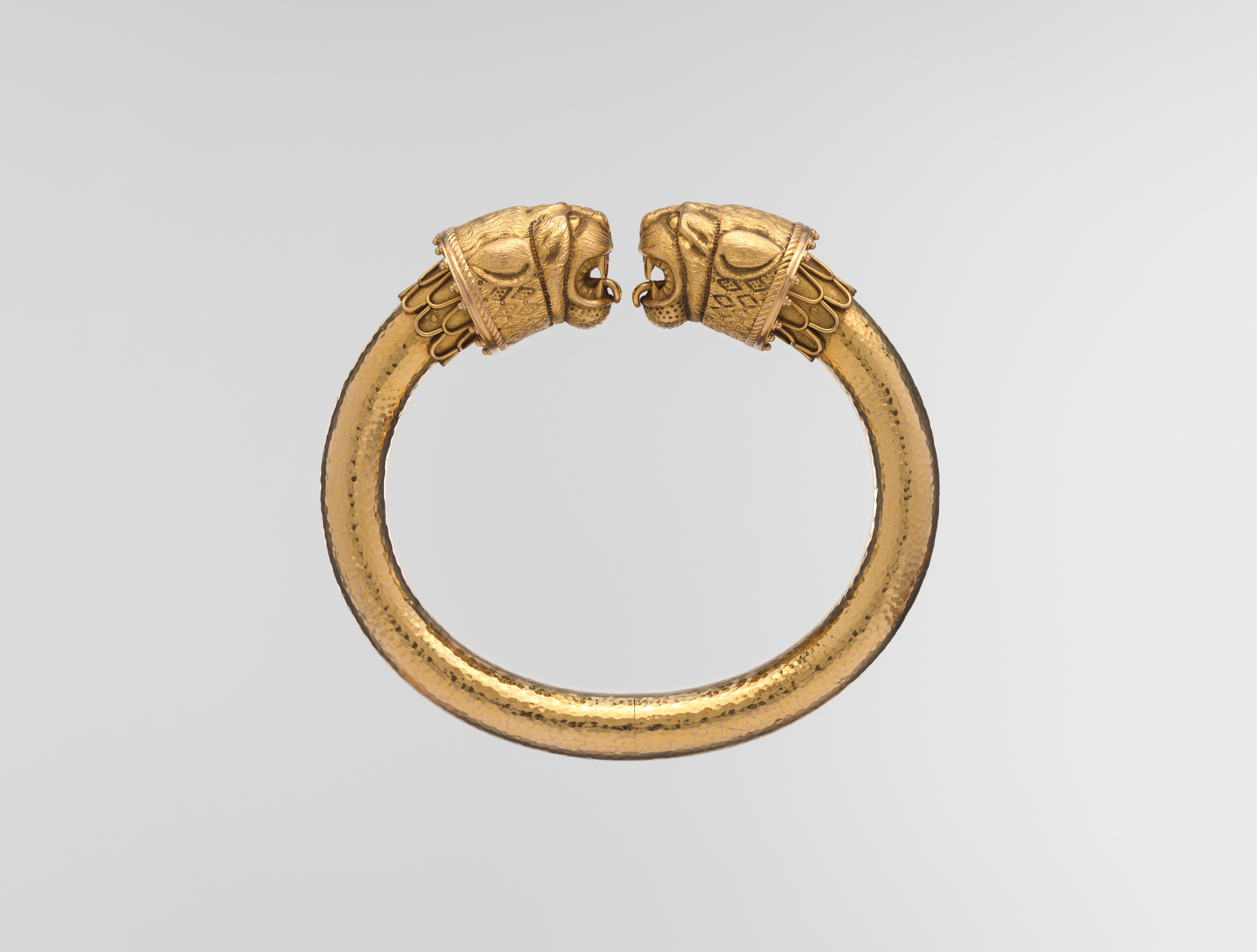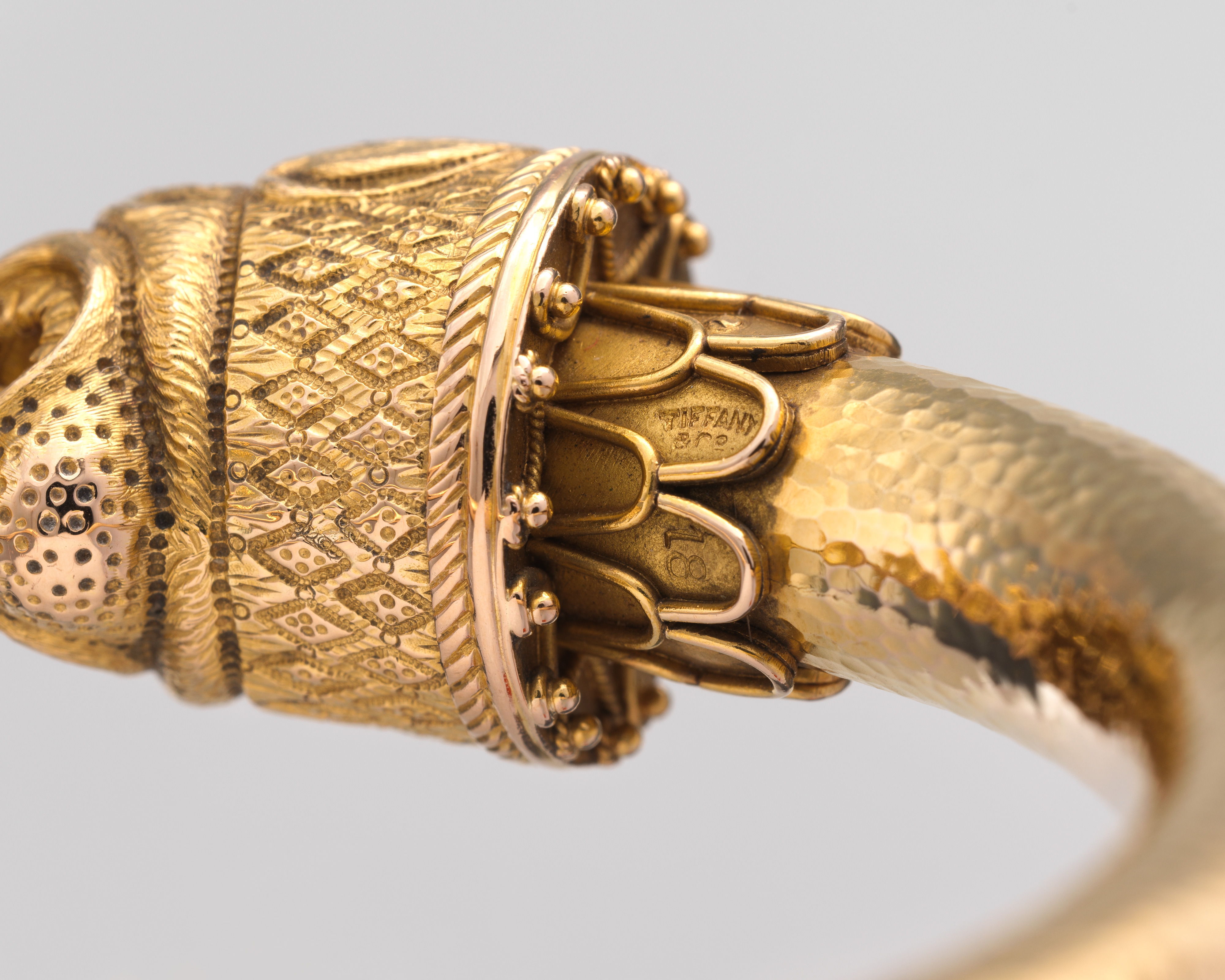Bracelet
Manufacturer Tiffany & Co.
One of the most celebrated acquisitions made by the Metropolitan Museum during its first decade of existence was the Curium Treasure from Cyprus. Discovered in 1875 at the ancient site of Kourion by American consul to Cyprus and amateur archaeologist Luigi Palma di Cesnola (1832–1904), this Treasure joined Cesnola’s earlier collection of Cypriot antiquities, which the Museum had previously acquired. The fame of the Curium Treasure helped to establish The Met as a leading repository of ancient art on a par with major European museums.
Cesnola was named a trustee of the Metropolitan Museum and elected Secretary in 1877. Two years later he became the Museum’s first Director, a position he would hold until his death in 1904. In August 1877, a formal agreement designated Tiffany & Co. as "sole agents" for the reproduction of works of art belonging to the Metropolitan Museum. Among the first objects reproduced by Tiffany’s workshop were twenty items of Cypriot jewelry from the Curium collection, including the original from which the present bracelet was created. Similar examples are in the collection of the British Museum; the Victoria & Albert Museum; and the Tiffany & Co. Archives.
Due to rights restrictions, this image cannot be enlarged, viewed at full screen, or downloaded.
This artwork is meant to be viewed from right to left. Scroll left to view more.





